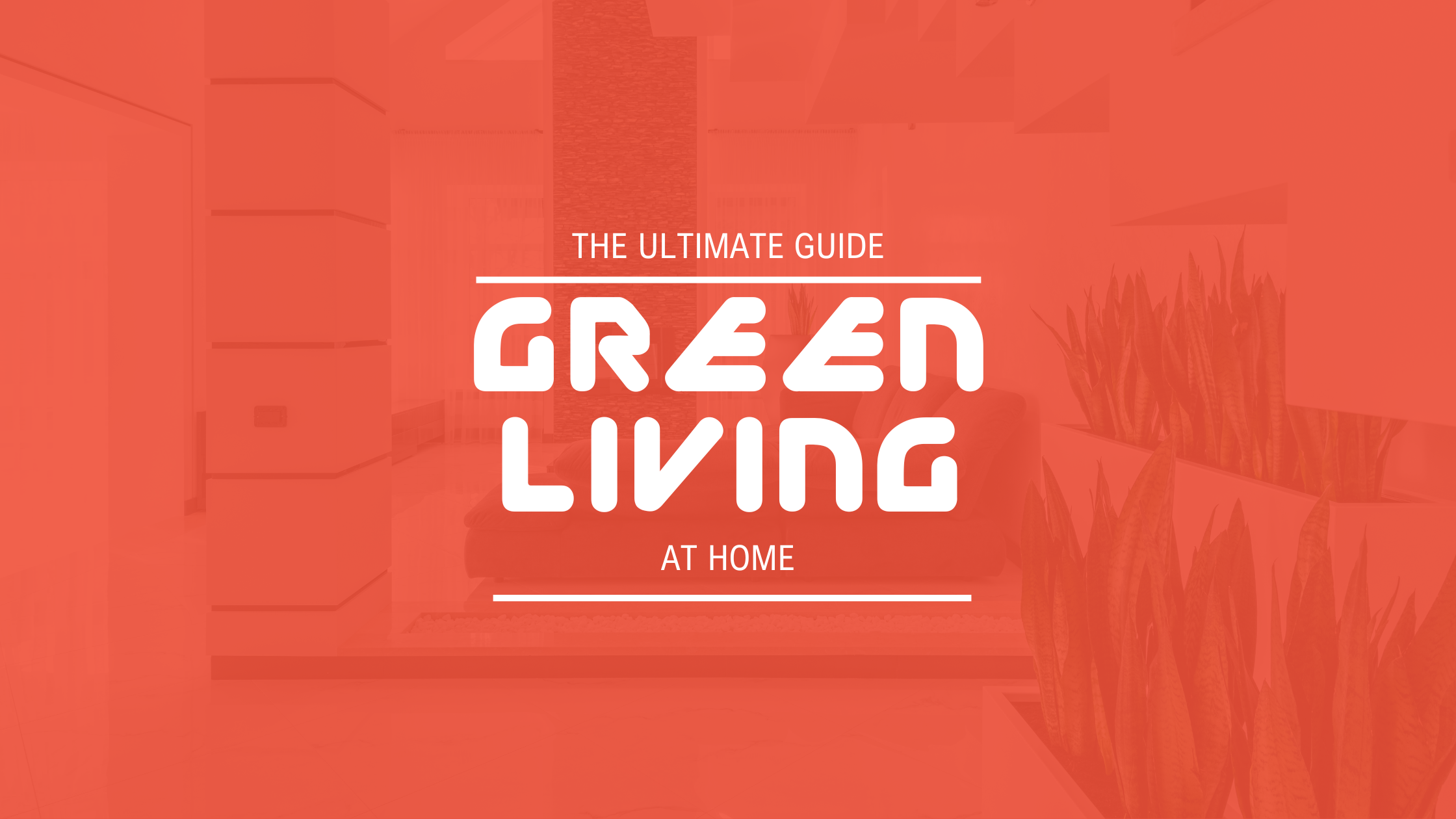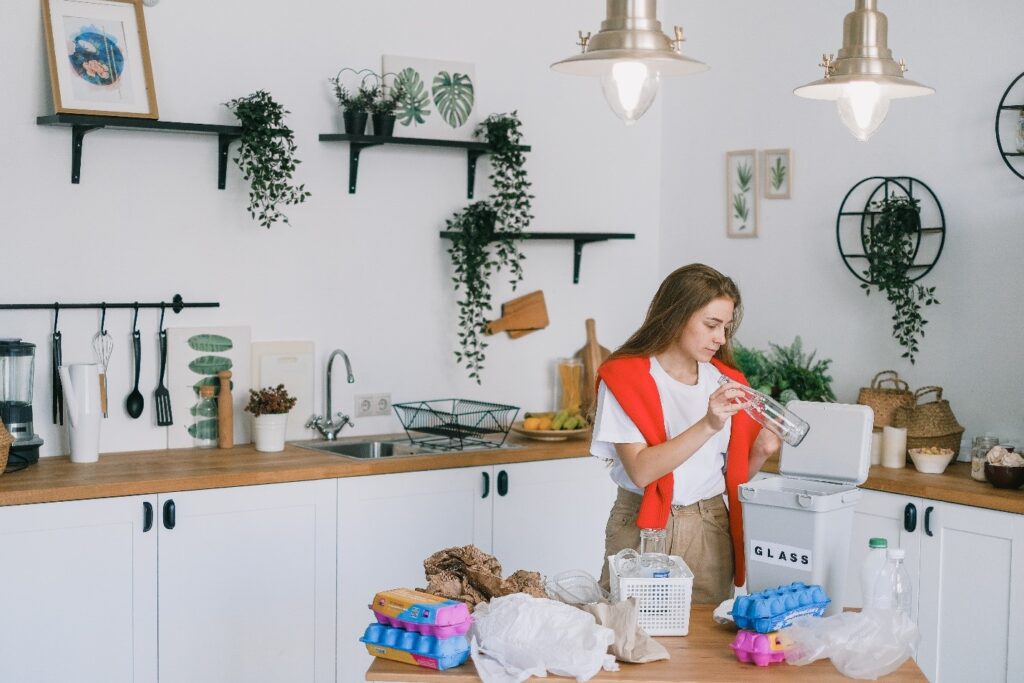Welcome to Sanctuary 101, your ultimate guide to green living at home! In a world where sustainability has now become more than just a buzzword, now’s the time to transform your humble abode into an eco-friendly sanctuary.
Whether you’re a seasoned environmental enthusiast or just beginning your green journey, this blog is your go-to resource for all things green living.
In this comprehensive guide, we’ll take you on a journey through practical tips, innovative ideas, and expert advice to help you create a living space that not only nurtures your well-being but also protects and preserves the planet.
From tiny changes that make a big impact to ambitious projects that redefine sustainability, we’ve got you covered.
Easy, Swift, and Affordable Ways to Start Green Living at Home
You know what? Green living doesn’t have to be overwhelming or expensive. With a little creativity & a dash of enthusiasm, you can leave a good old positive impact on the environment right from the comfort of your own home.
1. Let There Be LED:
Swap out your traditional incandescent light bulbs for energy-efficient LED bulbs. They last for ages, and they also consume significantly less energy, reducing both your carbon footprint and your electricity bill.
2. Unplug and Save:
Standby power, commonly known as vampire power, can account for a surprising amount of energy usage. Simply unplugging electronics & appliances when not in use can save energy and money.
Bonus tip: Invest in a power strip to easily switch off multiple devices at once.
3. Embrace Natural Light:
Open up those curtains & let the sunlight come in. Take full benefit of natural light during the daytime and reduce your reliance on artificial lighting.
It’s a simple yet effective way to save energy and create a warm, inviting atmosphere in your home.
4. Ditch the Disposables:
Say goodbye to single-use items like plastic cutlery, paper plates, and disposable water bottles.
Opt for reusable alternatives like stainless steel straws, bamboo utensils, and refillable water bottles. You’ll be amazed at how much waste you can eliminate with this small switch.
5. Green Your Cleaning Routine:
Swap out chemical-laden cleaning products for eco-friendly alternatives. Many household items like vinegar, baking soda, and lemon juice can be used for cleaning effectively and safely.
Not only will you reduce exposure to harmful chemicals, but you’ll also minimize their impact on the environment.
6. Get Thrifty with Secondhand:
Before buying new, explore thrift stores, online marketplaces, and yard sales for gently used furniture, home decor, and clothing.
Not only will you save bucks, but you’ll also divert items from landfills and support a circular economy.
7. Bring Nature Indoors:
Introduce indoor plants into your living space.
Plants not only add beauty and a touch of nature to your home but also improve air quality by absorbing pollutants & releasing oxygen. Plus, caring for plants can be a rewarding and therapeutic experience.
Remember, green living is a journey and every small step counts. These quick, low-cost changes are just the beginning. As you become more comfortable with these eco-friendly practices, you can explore additional sustainable options that align with your lifestyle and values.
Additional Sustainable Options for Green Living at Home
If you want to go full green, you can invest in an environmentally-friendly home. This not only helps our dear earth but also creates a healthier living space for you and your loved ones.
Ready to take an expensive leap toward a greener home? Here are our smart tips to help you make informed decisions and maximize your eco-friendly investments:
1. Energy-Efficient Upgrades:
Start by assessing your home’s energy usage. Consider investing in energy-efficient appliances, such as refrigerators, washing machines, and air conditioning units.
Look for products having the ENERGY STAR label, which indicates superior energy efficiency. You can also explore installing programmable thermostats and LED lighting throughout your home to further reduce energy consumption.
2. Harness the Power of the Sun:
We know that installing solar panels is a long-term investment that can significantly reduce your carbon footprint and energy costs.
While the upfront costs may seem daunting, many governments and organizations offer incentives and financing options to make solar panels more accessible.
You can research local solar providers, consult with professionals, and explore available incentives to determine if solar energy is a viable alternative for your home.
3. Insulate for Efficiency:
Proper insulation is vital for maintaining a comfortable and energy-efficient home. Insulating your walls, attic, and windows helps regulate indoor temperatures, reducing the need for excessive heating or cooling.
Consider using eco-friendly insulation materials, such as recycled denim or cellulose, which have a lower environmental impact compared to traditional options.
4. Water-Wise Solutions:
Conserving water is another crucial aspect of green living. Install low-flow faucets, showerheads, and toilets to reduce water usage without compromising functionality.
Consider harvesting rainwater for irrigation purposes or investing in efficient irrigation systems to minimize water waste in your garden.
5. Healthy Materials and Finishes:
When renovating or building, prioritize eco-friendly materials. Look for sustainably sourced wood, recycled content materials, and low or zero VOC (volatile organic compounds) paints and finishes.
These choices not only reduce the environmental impact but also contribute to better indoor air quality, promoting a healthier home environment.
6. Smart Home Automation:
You can go all in by Embracing technology to optimize your home’s energy efficiency. Install smart thermostats that learn your preferences and adjust temperature settings accordingly.
Invest in smart power strips that automatically turn off devices when not in use to eliminate standby power. These modifications can add up to significant energy savings over time.
7. Landscaping with Purpose:
Create a sustainable outdoor space by choosing native plants that require less water and maintenance. Incorporate rain gardens or permeable surfaces to help manage stormwater runoff.
Additionally, consider installing a composting system to reduce organic waste and enrich your soil naturally.
Green Living at Home Starts with YOU!
Take a look at these stats by Forbes: a whopping 83 percent of people recycle, 57 percent proudly sport reusable bags, and 45 percent have kicked single-use plastics to the curb.
You’re in good company! These numbers prove that many folks like you have taken those crucial first steps toward a greener future.
But here’s the exciting part: you don’t have to stop there! Green living at home is a journey, and it’s all about making small changes today that will set the stage for even bigger investments in the future.
It’s like planting the seeds of sustainability, knowing that they’ll grow into a flourishing garden of eco-consciousness over time.
So, let’s think long-term. By adopting a sustainable mindset and embracing an environmentally-friendly lifestyle, you’re not just making a difference for today – you’re paving the way for years of positive impact.
You’ll be amazed at how those small changes can ripple out and transform your home, your community, and the planet.
Konnect My Home – Connecting Folks to Green-Living Experience
Ready to embark on your green-living journey? Join us at Konnect My Home and discover a world of sustainable possibilities.
From solar panels to waste reduction strategies, we’re here to connect you with the knowledge, resources, and community you need to create an eco-friendly home.
Together, let’s drop some positive impact bombs on the planet while enjoying the rewards of green living at home. Don’t wait any longer—start your green-living experience now.
FAQs
Q: What are some quick ways to start practicing green living at home?
A: There are several simple ways to get started! You can begin by switching to energy-efficient light bulbs, reducing water usage by fixing leaks and installing low-flow fixtures, and implementing a recycling system for your household waste.
Q: Is it expensive to transition to green living at home?
A: Transitioning to green living doesn’t have to break the bank. Many eco-friendly practices can save you money in the long run. Simple changes like reducing water and energy usage, composting, and using reusable products are cost-effective. For larger investments such as solar panels or energy-efficient appliances, there are often financial incentives, rebates, and financing options available to make them more affordable.
Q: How can I reduce waste in my household?
A: Reducing waste starts with being aware of your consumption. Some practical steps you can take include using reusable bags, water bottles, and containers, avoiding single-use plastics, buying products with minimal packaging, composting food scraps, and recycling as much as possible. It’s all about making conscious choices and seeking out sustainable alternatives.
Q: Can green living at home benefit my health?
A: Absolutely! Green living promotes a healthier environment, which, in turn, can positively affect your health. For example, using eco-friendly cleaning products reduces exposure to bad & harmful chemicals while improving indoor air quality. Embracing sustainable practices like eating locally sourced, organic food and incorporating indoor plants can also contribute to a healthier lifestyle.
Q: How can I involve my family in green living practices?
A: Engaging your family in green living is a fantastic way to make sustainable habits a part of your daily life. You can start by explaining the importance of sustainability and involving them in decision-making processes, such as choosing eco-friendly products or planning energy-saving activities. Encourage participation in recycling, composting, and gardening, and make it a fun & educational experience for everyone.


